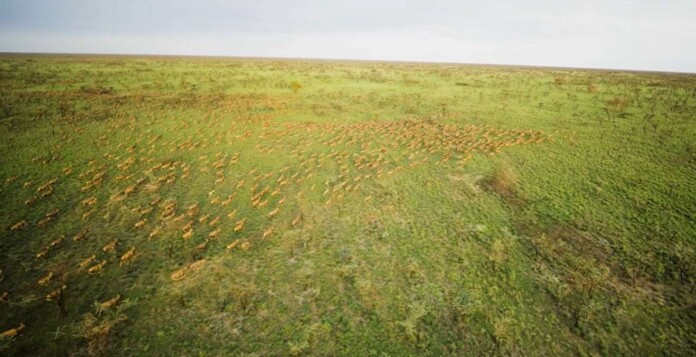The World’s Largest Mammal Migration

The world’s largest migration of land mammals takes place in South Sudan, and the government, with the help of African Parks, is working to protect it.
Ecologists have known about this migration through South Sudan’s “No Man’s Land” but didn’t fully understand its scope. Unlike the caribou migrations in Canada or the wildebeest migrations in Kenya, No Man’s Land hosts various migrating species, including Mongalla gazelle, bohor reedbuck, white-eared kob, and tiang.
Believing that protecting these migration routes and the 6 million animals they host is a significant conservation opportunity, African Parks and South Sudan’s government signed a 10-year agreement to manage No Man’s Land within Boma and Bandingilo National Parks, covering 12,700 square miles, four times the size of Yellowstone.
The 20-year civil war between Sudan and South Sudan largely spared this massive area. To start management and modern protections, African Parks, which manages national parks across Africa, began the largest GPS collaring survey of large animals, tracking 12 species with 126 GPS trackers.
Along with aerial surveys and help from 17 local ethnic groups, African Parks began to understand this massive animal movement. The antelope moved in a wide circle, changing course to follow rainfall.
“We flew for the first 30 to 40 minutes, and we didn’t see anything. I was like, ‘Oh, no, maybe it’s over. Maybe the wildlife has already disappeared,’” David Simpson, park manager for African Parks, told ABC News. “Then we start hitting hundreds, then thousands, then tens of thousands, and then hundreds of thousands.”
For the indigenous peoples, the migration symbolizes abundance and balance. They rely on these animals for food, clothing, medicine, and shelter. To help preserve their traditional life, African Parks has involved local people in conserving the ecosystem.